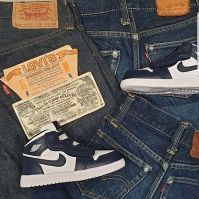Levi's Vintage Clothing
-
hello 2025!
supertalk is free to browse as a guest. You need to be a member to participate in discussions or buy and sell on the classifieds.
Classifieds listings are now free for members.
supertalk is now upgraded to //// supertalk 8 ////
______________________________________
Current new membership is $US 12 ONE TIME FEE. NO RENEWAL FEE.
______________________________________
You can also become a premium superseller or supermember. Businesses who want to promote their brand and products need to become a supersponsor. superfuture® is privately owned and has been online continuously for 26 years. supertalk has been online for 21 years and is a digital cockroach that will survive all current and future apocalypses.
-
Similar Content
-
- 18 replies
- 5029 views
-
- 12 replies
- 3701 views
-
Levi's Made & Crafted Poggy Mcqueen Pantclassified
By byjordanfox,
- levis
- madeandcrafted
- (and 4 more)
- 0 replies
- 1542 views
-
- 0 comments
-
- 18 replies
- 5826 views
-
-
Top 10 Active Viewed Topics
-
- 24338 replies
- 6416261 views
-
- 26779 replies
- 6231339 views
-
- 24748 replies
- 4533359 views
-
- 22998 replies
- 3577264 views
-
- 13939 replies
- 3461210 views
-
- 10650 replies
- 3179685 views
-
- 21232 replies
- 2882734 views
-
- 13295 replies
- 2793597 views
-
- 11573 replies
- 2513126 views
-
- 8534 replies
- 2474915 views
-












Recommended Posts
Join the conversation
You can post now and register later. If you have an account, sign in now to post with your account.